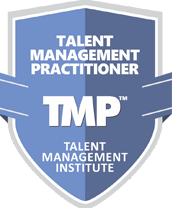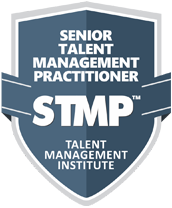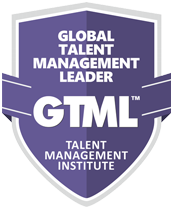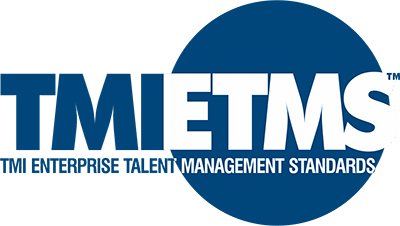We can't wait to hear from you
Connect
Discover how TMI credentials are designed to accelerate your career growth. Explore how TMI incorporates Talent Management into the practice and systems of Human Capital Management. Learn how you can steer your future confidently through TMI's research driven Talent Management standards. Fellow programs equip global HR professionals with the latest in Talent Management in the transformational way.
Explore how the TMP™, STMP™, and GTML™ credentials can take your HR career places, or add to the capabilities of your promising HR staff and leaders.
ExploreRevitalize your enterprise HR system through the TMI-ETMS by implementing the latest in international.
ExploreIf you are interested in consulting, training or education, partner with TMI to join the global league of TMI aligned institutions, companies and industries.
ExploreLearn the latest about how Talent Management is transforming HR into a future oriented business hyperfunction.
Explore
TMP™ is ideal for individuals starting in Talent Management, providing foundational knowledge and skills.
Download Program Brochure
STMP™ is tailored for mid-career HR professionals aiming to accelerate their growth and take on advanced roles.
Download Program Brochure
GTML™ is suited for senior HR professionals ready to lead global talent strategies and drive organizational transformation.
Download Program BrochureLearn the steps to earn your TMI certification, from application to successful completion and maintaining your credential.
TMI credentials include globally recognized digital badges, offering a portable and verifiable representation of your achievements.

Kickstart your Talent Management journey with TMI’s globally recognized certifications and resources to excel in your career.
Create myTMI Account TodayTMI Global and Associate Fellow programs turn HR professionals into global Talent Leaders who can drive growth with their superlative strategic ability, business perspective and readiness for change. In the last three years, more than 150 senior HR professionals and HR leaders from 46 global organizations across industries have completed these programs that establish new standards for the practice of talent management as a driver of organizational success and business competitiveness.
You can contact us here for more information.

TMI–ETMS10™ and TMI–ETMS14™ certified organizations are effective for restructuring Talent Management in an organization. With TMI, organizations are better, more agile and better prepared for challenges that are to come.

The TMI-Enterprise Talent Management Standards power enterprise HR with the latest in Talent Management.
To choose a TMI–ETMS™ version most appropriate for your organization!
Write to us via the contact form.

Partnering with TMI means building a powerful structure of Talent Management thought and practice resulting in business profits through standards, certifications and networks.
Get your HR staffers and managers TMI certified on Talent Management by adding TMI into your training regimen. One step toward embedding TMI credentials in your institutions curricula is to become a TMI-ETMS™ consulting partner. Join us to be a part of the groundbreaking work of Talent Management.
The TMI Way leads to Talent Management becoming an enterprise-wide consciousness. TMI standards and frameworks are making Talent Management act as a measurement for the state and quality of an organization's readiness for the future.

If you already have an international qualification in HR from a TMI-recognized institution, then acquiring a TMI credential is easier and faster for you! Learn more to see if you can QualiFLY™ to a TMP™, STMP™ or GTML™ certification.
 Institutions
InstitutionsYou can QualiFLY™ if you are a student or an alumnus of a TMI-recognized institution. Click below to learn more and to see if you QualiFLY™.
Read More
TMI’s blogs cover the latest trends, insights, and best practices in HR and talent management.
Comprehensive guides covering talent development, HR metrics, key facts, and more.
Explore TMI's latest updates, announcements, news and press releases in our newsroom.
Dive into the inspiring journeys of TMI certification holders and learn how the certification has transformed their careers.
An Interview series featuring key advice from global talent leaders for future HR professionals.
This website uses cookies to enhance website functionalities and improve your online experience. By browsing this website, you agree to the use of cookies as outlined in our privacy policy.
X
CredBadge™ is a proprietary, secure, digital badging platform that provides for seamless authentication and verification of credentials across digital media worldwide.
CredBadge™ powered credentials ensure that professionals can showcase and verify their qualifications and credentials across all digital platforms, and at any time, across the planet.

Please enter the License Number/Unique Credential Code of the certificant. Results will be displayed if the person holds an active credential from TMI.

